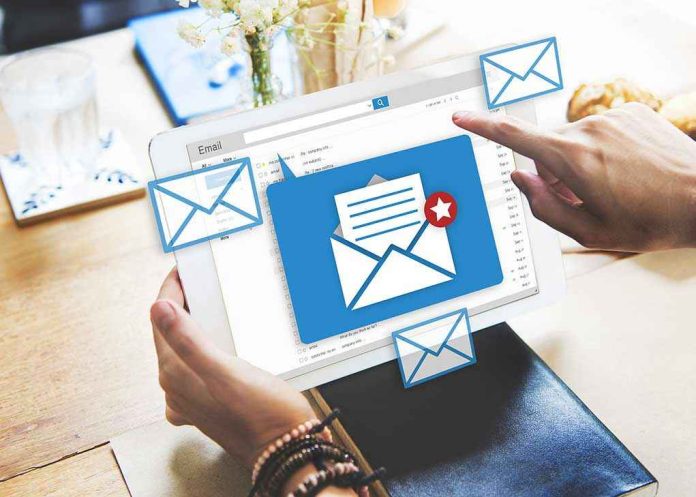
That urgent Microsoft security alert popping up in your inbox might just be the gateway for a cyber-thief to snatch your identity, your money, or even your business—so, how do these scams work, and why do even smart people fall for them?
At a Glance
- Fake Microsoft alerts use urgent language and convincing visuals to trick users into giving up credentials.
- These scams are rapidly evolving, blending real Microsoft links with malicious ones to avoid suspicion.
- Attackers target everyone—from home users to corporate executives—by exploiting trust in the Microsoft brand.
- Experts recommend multi-factor authentication and skepticism as the best defense, but human error remains the weak link.
The Rise of Microsoft Phishing: From Clumsy Copycats to Master Impersonators
Picture this: the year is 2003, and your email is bombarded with messages from “Micros0ft” about urgent account problems. The typos are glaring, the graphics are pixelated, and you’d have to be half-asleep (or half a bottle in) to fall for such an obvious fake. Fast-forward to today, and the game has changed. Attackers now mimic Microsoft’s branding so well that even seasoned IT pros occasionally sweat over a suspicious subject line. Every click is a coin toss, and the scammers are holding the loaded dice.
In the last two years, the explosion of remote work has made Microsoft accounts the digital keys to entire personal and professional kingdoms. Attackers know it, and they’re getting bolder. Recent campaigns documented thousands of emails using official-looking sender addresses, real Microsoft logos, and messages like “Unusual sign-in activity detected—act now or lose access!” One campaign in October 2024 sent over 5,000 phony security alerts in a single swoop, blending real Microsoft links right alongside the traps. Like a magician using sleight of hand, the scammer’s greatest trick is distracting you with the familiar while the real danger hides in plain sight.
Why Attackers Love Microsoft (And Why You Should Care)
Microsoft’s ecosystem isn’t just big—it’s enormous. With billions of users worldwide and most businesses running some flavor of Windows, Office, or Azure, impersonating Microsoft is the digital equivalent of a cat burglar disguising himself as a police officer. You trust the uniform, so you let your guard down. Attackers exploit this trust by crafting messages that prey on fear: warnings of locked accounts, fraudulent charges, or imminent data loss. The urgency isn’t just for show—it’s a psychological cattle prod, rushing you past your natural skepticism and straight into the trap.
Cybercriminals range from lone wolves in basements to organized international syndicates. Their motives are simple: your data, your money, or both. Whether they’re after the CEO’s login to siphon millions or your grandmother’s password to max out her credit cards, the playbook is the same. And despite Microsoft’s best efforts—patching vulnerabilities, sending security advisories, and collaborating with cybersecurity firms—the attackers keep adapting. If you ever doubted the creativity of cybercriminals, consider this: some scams now combine genuine Microsoft support links with malicious login pages so seamlessly that even techies get tripped up.
How the Scams Work: The Anatomy of a Digital Stickup
Modern phishing attacks are a far cry from the “Nigerian prince” days. Today, a fraudulent Microsoft alert arrives in your inbox, decked out in authentic branding and urgent prose. Click the link, and you’re whisked away to a sign-in page that looks pixel-perfect—except it’s waiting to steal your credentials. Some scams take it further, using pop-ups or fake support calls to pressure users into granting remote access or even paying “support fees.”
Attackers now frequently mix real Microsoft links (to privacy policies or help pages) with malicious login forms, lowering your defenses with every legitimate touchpoint. They spoof sender addresses so convincingly that even eagle-eyed users sometimes miss the red flags. One wrong move, and you’ve handed over the keys to your digital life. For businesses, the fallout can include data breaches, financial loss, and even regulatory penalties. For individuals, account compromise often leads to identity theft or drained bank accounts. The cost of a single click has never been higher.
Expert Advice: Dodging the Digital Landmines
Security experts don’t mince words: today’s phishing campaigns are sophisticated, relentless, and constantly evolving. The consensus is clear—no single solution is foolproof. Multi-factor authentication adds a crucial layer, but vigilance is non-negotiable. Scrutinize sender addresses. Hover over links to spot suspicious destinations. Ignore pop-ups demanding remote access or payment. Above all, trust your gut—if an alert feels off, pause and verify through official Microsoft channels.
Cybersecurity professionals point to a sobering truth: technical defenses are only as strong as the weakest human link. Attackers bank on moments of panic and haste, so slow down and double-check before you click. Microsoft urges users to report suspected phishing, and companies now invest heavily in user education. The arms race continues, but with a dose of skepticism and a dash of common sense, you can keep your digital identity locked down tighter than Fort Knox.
Sources:
Microsoft Support Community, 2023-01-31





